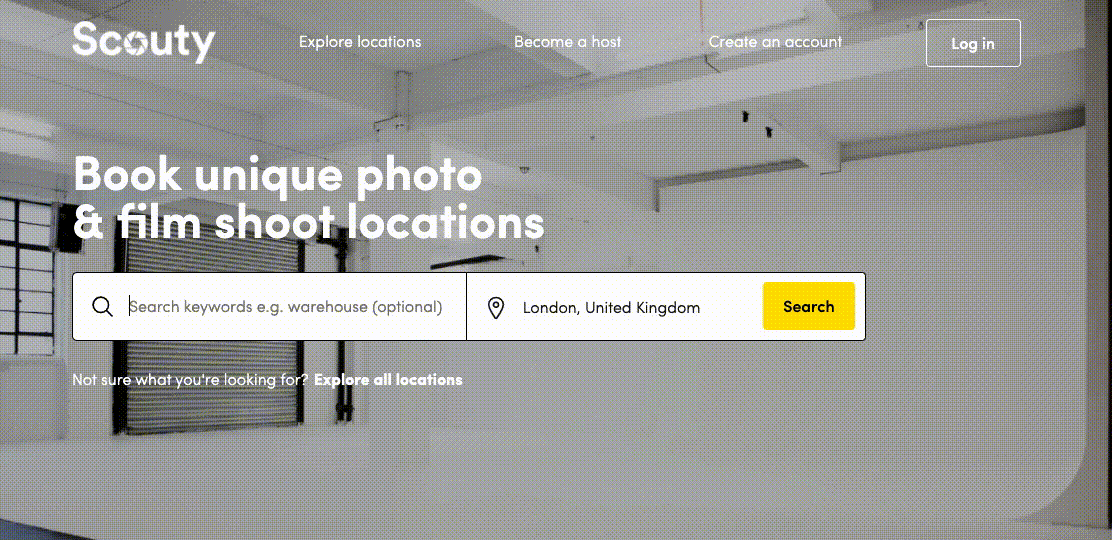
We’ve created a guide to help you minimise health and safety risks on set. The guide is intended as a high-level framework to provide guidance and support for the assessment and minimisation of risks. Additional information provided by the government should be taken into consideration we recommend that a full analysis of the operations and current government advice is undertaken to prepare as fully as possible.
Pre Production
1. Assessing the risks
Different types of shoots have different levels of risk. For example, an outdoor shoot with a small team is safer than an indoor shoot with a large crew. These days one important aspect of pre production is a proper assessment of risks. We recommend that you create a risk assessment checklist early in the pre production process.
A risk assessment checklist could deal with questions like these, among others:
- What’s the crew size going to be?
- Did all crew members take coronavirus safety training before a shoot?
- What locations will we shoot at and how big / small are they?
- How is the ventilation?
- What PPE is needed? Are masks, gloves and other equipment available?
- What equipment do we need? Will the equipment be shared?
- What kind of scenes will be shot? Can we limit contact risk?
2. Consider your schedule
Shorter shoots are safer than longer shoots due to viral load (i.e. two 3 hour days is safer than one 6 hour day) and whenever possible, shoots should be done in shifts (i.e., first the props team, then the lighting team, then the photo team, then the video team, etc.).
If you must travel, please plan ahead, travel outside of the busiest times and consider all possible means of transportation. If your crew has to fly, airlines operating appropriate social distancing and hygiene measures should be favoured. Domestic public transport should be a “last resort” and vehicle sharing should be limited.
Also, pease try to take the most direct route and avoid busy interchanges.
If clients or the agency are not local, use communication methods like live stream / virtual attendance options if possible.
Important: Crew members traveling from other countries to the UK might need to be quarantined and tested following government guidelines.

4. Keep crew size and contact to a minimum
A rule of thumb is that the more people are on location and the busier the shoot is, the higher are the risks of infection.
Thus, smaller crews are better. Not only the crew size is an important factor to consider but also the location at which the shoot is happening (crew density). The larger the location the easier it could be for the crew to maintain 2m social distancing practices at all times.
Try and keep the crew as small as possible and consider digital communication tools to stay in touch with team members like stylists, digital techs, retouchers, etc.
5. Go digital
Do whatever possible digitally. This includes castings, prop styling, wardrobe styling, pre production meetings, etc.
When looking for locations for your shoot you have to keep possible on set risks in mind. Location scouting and booking should be done by using digital options like Scouty.
- Think of your crew size and how they can safely work together on location.
- An outdoor shoot in the Scottish highlands is safer than a shoot inside the Piccadilly Circus station.
- A large indoor space is better than small indoor space.
Try to allocate a big enough budget for your location so you can pick one where the crew members can maintain 2m social distancing practices at all times.
Please also consider that open windows are better than windows closed and that fans can help to control air streams on set.
On Location
1. Follow guidelines
All crew members should have completed their coronavirus safety training and follow the guidelines. There should be a COVID-19 supervisor on set, who has the authority to stop work if it becomes unsafe.
2. Cast and crew on-set
Cast and crews should be organised into numerous cohorts so that team can be separated whenever possible.
3. Disinfection of sets
All our hosts are dedicated to cleaning their location regularly and thoroughly. Especially frequently touched surfaces will be sanitised.
Even-though our hosts will do everything to minimise health risks, it is important that you also are aware of busy surfaces and make sure to keep them sanitised during your shoot.
Thus, smaller crews are better. Not only the crew size is an important factor to consider but also the location at which the shoot is happening (crew density). The larger the location the easier it could be for the crew to maintain 2m social distancing practices at all times.
Try and keep the crew as small as possible and consider digital communication tools to stay in touch with team members like stylists, digital techs, retouchers, etc.
4. Equipment handling and disinfection
Personal and hired equipment (incl. cameras, lighting, production supplies etc.) should not be shared. When sharing is unavoidable disposable gloves should be worn, and the equipment should be sanitised after use. Waste like disposable gloves should be disposed of safely.

5. Personal Protective Equipment (PPE)
Crew should provide their own PPEs when they are available without taking them from medical workers or other essential services, production should provide backups.
Crew members should wear face masks. Those can be N95 masks (best case), surgical masks or even self-made masks that cover your mouth and nose. It’s also recommended to wear latex gloves on set when equipment is shared or surfaces (e.g. displays) are touched frequently.
To avoid a potential spread of the virus, it’s recommended that crews change out of their “on location” clothes before returning to personal vehicles, homes, etc. Please also note that disposable PPEs should be thrown away safely. Reusable equipment like cloth face masks need to be sanitised before using them again.
Important: All Personal Protective Equipment must be used correctly and thus it is important that crews are trained in proper use.
6. Hair and makeup
Because of their potential close proximity to talent, hair and makeup stations should be kept 2 meters apart. In most cases MUAs and stylists must go within 2m distance of another person to do their job. If this is the case PPEs must be used properly. It’s recommended to allocate tools and equipment to cast members. When not in use, products should be sealed and disinfected.
7. Visitors and non essential crew members
No visitors should be allowed during shoots. Only allow essential crew members on set. Establish a safe controlled environment where people know their roles and are looking out for themselves and their colleagues.
It’s important to note that there is no 100% safe way to shooting with more than one person present but this guide should help you minimise the health risks of Covid-19 on set.
As shots can slowly happen again we would love to encourage you to share your health and safety procedures in the comment section. What did work for you and what didn’t?
Stay safe!

Nico Döser
Co-Founder
Your and our hosts health and safety is our top priority. If you have any questions reguarding “socially distanced” shoots please don’t hesitate to get in touch with us.


